iPhone 17 Air: The Thin Beauty and the Port Predicament Apple's Balancing Act and the EU Regulations
iPhone 17 Air: The Thin Beauty and the Port Predicament Apple's Balancing Act and the EU RegulationsApple's upcoming iPhone 17 Air is poised to be the thinnest iPhone ever. However, its development has been fraught with compromises and strategic maneuvering surrounding its port design, ultimately leading Apple to abandon plans for a portless device
iPhone 17 Air: The Thin Beauty and the Port Predicament Apple's Balancing Act and the EU Regulations
Apple's upcoming iPhone 17 Air is poised to be the thinnest iPhone ever. However, its development has been fraught with compromises and strategic maneuvering surrounding its port design, ultimately leading Apple to abandon plans for a portless device. This decision reflects Apple's own considerations of technological and market risks, the potential impact of EU regulations, and its projections for the future of wireless charging technology.
Bloomberg previously reported that Apple ambitiously aimed to create a revolutionary portless iPhone 17 Air, completely forgoing the USB-C port in favor of full reliance on wireless charging and cloud data synchronization. This bold vision sought to minimize the phone's thickness to an extreme, prioritizing an ultra-thin design. However, this plan was ultimately scrapped.

A primary reason for abandoning the portless design was the fear of conflict with EU regulations. The EU's Common Charger Directive mandates that all electronic devices sold within the EU must use a unified USB-C port for wired charging to reduce e-waste and protect the environment. This directive forced Apple to abandon its long-used Lightning port and adopt USB-C for iPhones.
The creation of this regulation itself was dramatic. Initially, when the directive was proposed, microUSB was the most common port. Had legislation been completed at that time, the inferior user experience of microUSB would have become the standard for all devices, negatively impacting consumers. Fortunately, by the time the regulation was finalized, USB-C had become the de facto standard and was therefore adopted, avoiding this unfortunate outcome.
While Apple had already adopted USB-C across its Mac and iPad lines, the iPhone stubbornly clung to Lightning. The mandatory nature of the EU regulation finally forced Apple to switch the iPhone lineup to USB-C. In January 2025, the deadline for the EU Common Charger Directive arrived, and Apple immediately discontinued direct sales of the Lightning-equipped iPhone SE and iPhone 14, completing the transition to USB-C.
However, even after complying with EU requirements for wired charging ports, Apple remained fixated on the portless design and briefly considered implementing it in the iPhone 17 Air. Bloomberg reporter Mark Gurman reported that Apple seriously considered removing the wired charging capability entirely from the iPhone 17 Air, making it the first fully portless iPhone, relying solely on wireless charging and cloud synchronization for all data transfer and charging functions.
Ultimately, Apple abandoned this seemingly appealing plan. Besides technological challenges, a major contributing factor remained concerns about EU regulations. Apple worried that removing the USB-C port, even if the phone could wirelessly charge, might still invite displeasure from EU regulators.
However, according to Federica Miccoli, a spokesperson for the European Commission, the Common Charger Directive doesn't mandate that all devices must have a USB-C port. The directive only specifies that if a device has a wired charging port, it must be USB-C. Wireless-only devices that cannot be charged wired are exempt from the unified wired charging requirement.
Miccoli further explained that the EU regulation focuses not just on unifying wired charging ports but also on promoting the unification of wireless charging standards to prevent future market fragmentation and reduce negative impacts on consumers and the environment. The European Commission will actively monitor the development of various wireless charging technologies, including market dynamics, market penetration, technical performance, interoperability, energy efficiency, and charging performance, to foster a more unified and efficient wireless charging ecosystem.
It's noteworthy that Apple previously donated the MagSafe standard to the Wireless Power Consortium and it became part of the universal Qi2 standard. This means that a portless phone equipped only with MagSafe wireless charging would be entirely legal to sell in EU countries.
Therefore, Apple's abandonment of the portless iPhone 17 Air design wasn't solely due to EU regulations, but rather a comprehensive consideration of technological maturity, market acceptance, and potential risks. While this year's iPhone 17 Air may retain the USB-C port, with the continuous advancement and standardization of wireless charging technology, the emergence of a completely portless iPhone may only be a matter of time. Apple's balancing act reflects the challenges faced by tech companies in navigating innovation and regulation, and also foreshadows new directions in smartphone development. This battle over ports will ultimately be decided by market forces and technological progress.
Tag: and the iPhone Air The Thin Beauty Port Predicament
Disclaimer: The content of this article is sourced from the internet. The copyright of the text, images, and other materials belongs to the original author. The platform reprints the materials for the purpose of conveying more information. The content of the article is for reference and learning only, and should not be used for commercial purposes. If it infringes on your legitimate rights and interests, please contact us promptly and we will handle it as soon as possible! We respect copyright and are committed to protecting it. Thank you for sharing.


